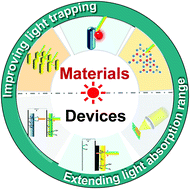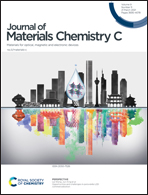Light management in photoelectrochemical water splitting – from materials to device engineering
Abstract
Photoelectrochemical (PEC) water splitting is a very attractive approach to produce clean hydrogen using abundant natural resources such as solar energy and (sea)water. As its primary step, light absorption controls the available amount of photons for the subsequent processes. Light management in PEC water splitting is essential to obtain high performance and efficiency. Herein, light management strategies via selective material choices and device engineering are comprehensively reviewed from two aspects: (1) improving light trapping ability; and (2) extending light absorption range. From a material design standpoint, morphology control of the photoelectrode components and application of surface-plasmon resonance are priorities. Besides these design priorities, approaches and strategies such as doping, solid–solution formation, and photon up-conversion will be briefly discussed. From a device engineering standpoint, tandem PEC devices are proposed to extend light absorption. The concentration of light is involved as an effective route to regulate the photon flux. In addition to experimental work, simulations of light distribution and absorption in PEC water splitting are examined to provide new device-oriented recommendations. This work features realistic and practical light management approaches for efficient and stable PEC water splitting materials, systems and devices by considering the synergistic effects of light absorption, charge transfer, and surface reactivity.



 Please wait while we load your content...
Please wait while we load your content...